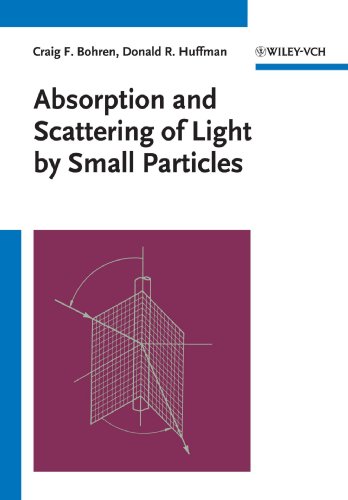Absorption and scattering of light by small particles epub
Par james betty le mardi, novembre 29 2016, 23:13 - Lien permanent
Absorption and scattering of light by small particles by Craig F. Bohren, Donald R. Huffman


Absorption and scattering of light by small particles book
Absorption and scattering of light by small particles Craig F. Bohren, Donald R. Huffman ebook
Page: 533
Publisher: John Wiley & Sons
ISBN: 047105772X, 9780471057727
Format: djvu
Scattering, Absorption, and Emission of Light by Small Particles book download. When the windows are illuminated, the nanoparticles scatter specific colors of light. Subatomic particles are the particles smaller than an atom. 1895: Discovery of the ultraviolet radiation below 200 nm, named vacuum ultraviolet (later identified as photons) because it is strongly absorbed by air, by the German physicist Victor Schumann. The size distributions from three individual measurements show that the majority of ultrafine particles in RPMI medium are present as single particles or small agglomerates of two to three particles. There are two types of subatomic particles: elementary particles, which are not made of other particles, and composite particles. Ultrafine particle size in RPMI medium was further analyzed by dynamic light scattering. Scattering, Absorption, and Emission of Light by Small Particles Andrew A. μm particles; B: 0.05 μm particles). The amount of IL-8 was determined by comparing the absorbance of the samples with standard recombinant human IL-8. Aerosol Optics: Light Absorption and Scattering by Particles in the Atmosphere (Springer Praxis Books Environmental Sciences) pdf download · Edit · Delete · Tags · Autopost The work is founded on the solid basis of radiative transfer theory, coupled with Maxwell theory for the calculation of the scattering properties of small particles. More recently, engineers have used them to develop new, light-activated cancer treatments and to enhance light absorption in photovoltaics and photocatalysis. CHICAGO (Reuters) – Air pollution heavy in small particles may cause blood clots in the legs, the same condition air travelers call “economy class syndrome” from immobility during flight, researchers said on Monday. Fraser: Right, but you're saying like absorption and re-emission, so are these photons that are bouncing into particles in the atmosphere…then they're getting absorbed and then they're getting re-emitted? After five decades of debate, Stanford engineers determine how collective electron oscillations, called plasmons, behave in individual metal particles as small as just a few nanometers in diameter. Andrea Baccarelli of the Harvard School of Public Health in These particles are also very efficient at scattering/absorbing light and are responsible for regional haze and smog. More Particles Predicted – 23.